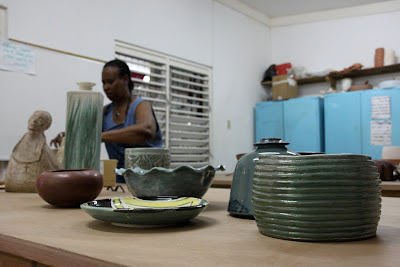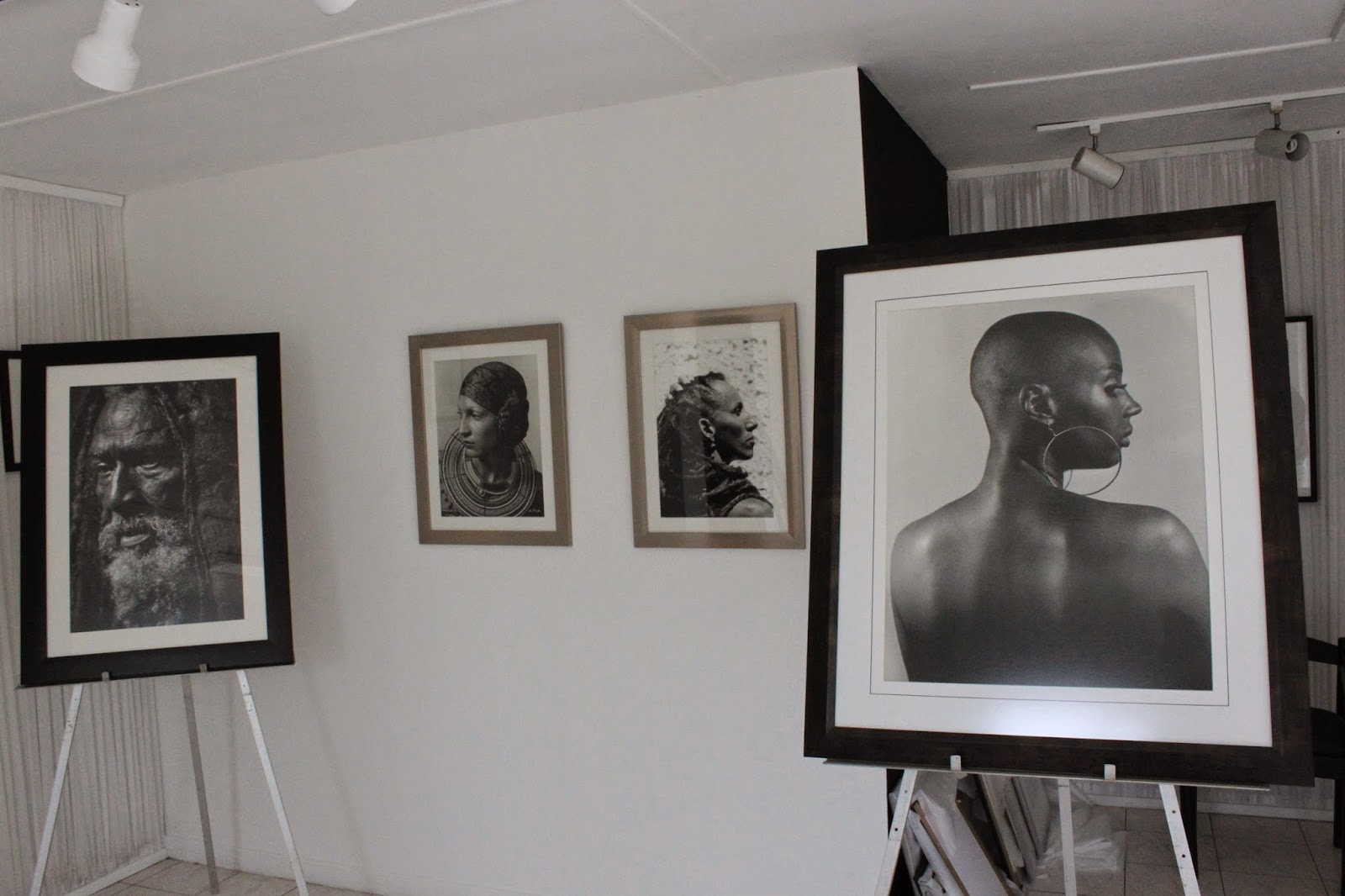Poetry in clay
 |
| Norma Rodney Harrack transforms clay into a work of art |
“The
potter’s wheel was a synchronization of feet hand and brain,” Rodney Harrack
said, working like a drummer in harmony - tapping the pedal with his foot to
play the bass drum as the hands work the drum sticks on the cymbals to produce
beats.
Pottery,
Rodney Harrack says, is a very meticulous process requiring patience and hard
work. Like cooking, the prepping
of the ingredients is a time consuming task.
It starts
with choosing the right clay, which is soaked for around two weeks to get the
sediments settle down, then passed through a sieve. “The clay is in a
consistency of thick ice cream, it is then kept to dry, when it becomes a
leather hard stage at which point it is kneaded to take out any air pockets,” she
explained.
“The clay
has to be leather or cheese hard consistency, and is left overnight in the open
before it is carved.”
The
prepping process takes around three to four weeks…or one can buy ready made
clay start using it, “It is a personal choice, the traditional process gives
gratification but one has to wait to execute a creative idea,” the potter,
artist and lecturer says.
“It’s
difference between making a cake from a cake mix or going through the process
of mixing the ingredients from the scratch,” says Ann Ventura, founder and
creative director of Sanaa Studios in Kingston.
Pottery
traces its history to ancient civilizations, as a work of art and in daily use,
from the ‘Yabba’ pots of Africa to its aesthetic use in Mesopotamia (modern day
Iran and Iraq) and the Indus Valley Civilization (India and Pakistan) over 6000
years ago.
A foot
pedal controls the speed of the wheel; the pace is set at fast after the clay
is ‘thrown’. “ the process is called throwing because you have to throw the
clay on the wheel and then centre it,” she informed.
It is
critical that the clay is centred and once that is done the process of moulding
commences. The moist hands movements decide what shape the clay takes, couple
with the pressure applied and excessive moisture removed.
If
something goes wrong, she says, you can get the clay back as a lump and start
all over again.
 “The clay
is soft and obedient to be shaped,” says Rodney Harrack, who is the pottery
lecturer at Edna Manley College of the Visual and Performing Arts, Kingston.
“The clay
is soft and obedient to be shaped,” says Rodney Harrack, who is the pottery
lecturer at Edna Manley College of the Visual and Performing Arts, Kingston.
Once the
desired form is achieved it is removed by running a cutting metal wire, the
pottery is then kept to dry and then fired in the kiln. Once baked the
finishing touches are applied, which are a variety of glaze or paint according
to the artist’s preferences and style.
“Traditionally
the pots were ‘burnished’, which is a process of smoothening the surface, after
two days of the pot being made, by rubbing a smooth stone or back of a spoon to
give the shine,” she informed. “The process takes about three to four hours.”
Pottery is
a painstaking and at times back breaking process, but at the end of it all the
sweat, toil and caking hands in clay, like planting a seed and see it
germinate, gives a sense of elation and gratification to the creator.
The potter’s
wheel moves like a circle of life, creating forms and shapes from earth.
“It is a
very meaningful experience, which still holds relevance and bonds us with
nature,” Rodney Harrack says.
amitabh.sharma@hotmail.com








Comments
Post a Comment